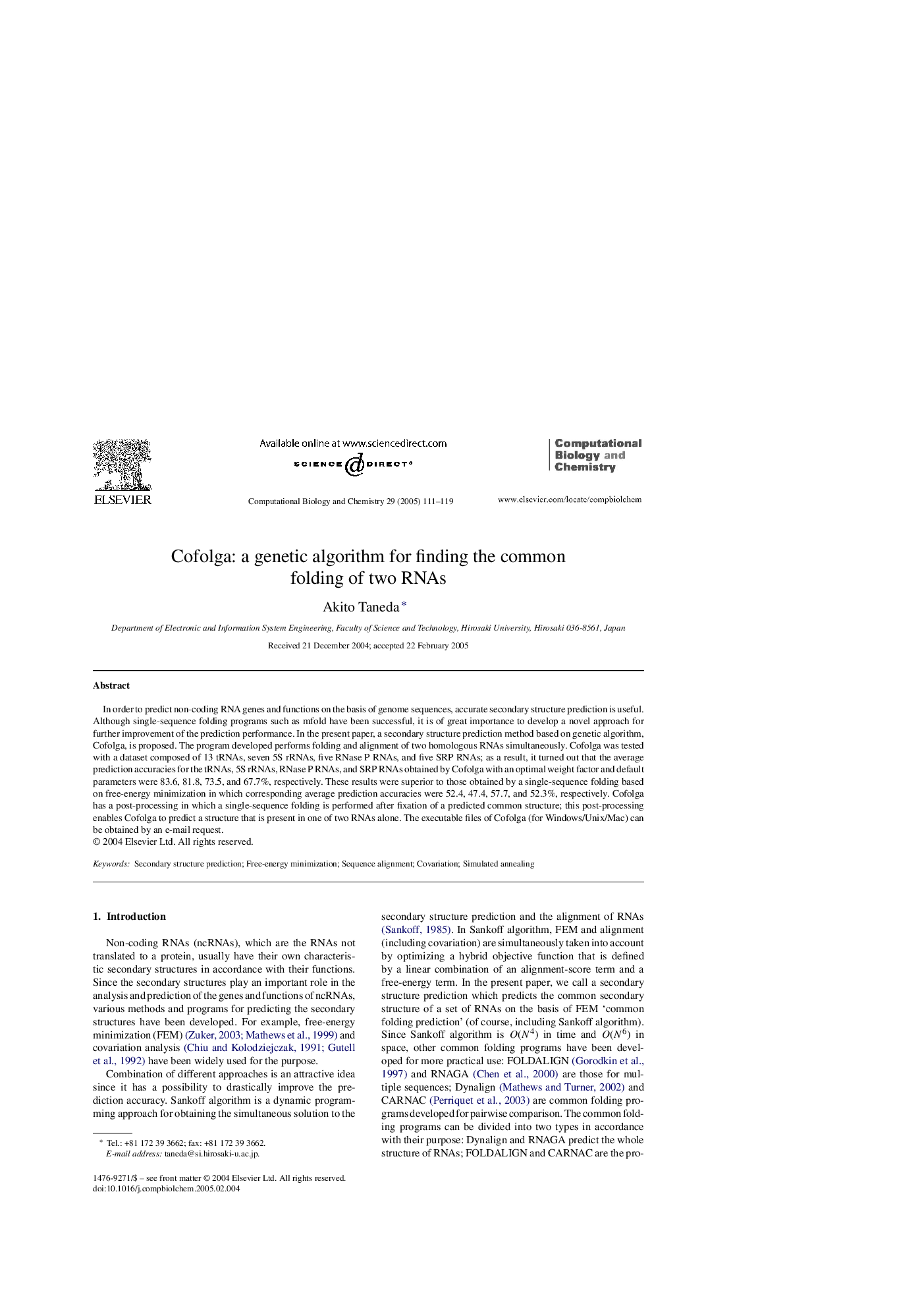| Article ID | Journal | Published Year | Pages | File Type |
|---|---|---|---|---|
| 10231977 | Computational Biology and Chemistry | 2005 | 9 Pages |
Abstract
In order to predict non-coding RNA genes and functions on the basis of genome sequences, accurate secondary structure prediction is useful. Although single-sequence folding programs such as mfold have been successful, it is of great importance to develop a novel approach for further improvement of the prediction performance. In the present paper, a secondary structure prediction method based on genetic algorithm, Cofolga, is proposed. The program developed performs folding and alignment of two homologous RNAs simultaneously. Cofolga was tested with a dataset composed of 13 tRNAs, seven 5S rRNAs, five RNase P RNAs, and five SRP RNAs; as a result, it turned out that the average prediction accuracies for the tRNAs, 5S rRNAs, RNase P RNAs, and SRP RNAs obtained by Cofolga with an optimal weight factor and default parameters were 83.6, 81.8, 73.5, and 67.7%, respectively. These results were superior to those obtained by a single-sequence folding based on free-energy minimization in which corresponding average prediction accuracies were 52.4, 47.4, 57.7, and 52.3%, respectively. Cofolga has a post-processing in which a single-sequence folding is performed after fixation of a predicted common structure; this post-processing enables Cofolga to predict a structure that is present in one of two RNAs alone. The executable files of Cofolga (for Windows/Unix/Mac) can be obtained by an e-mail request.
Related Topics
Physical Sciences and Engineering
Chemical Engineering
Bioengineering
Authors
Akito Taneda,
